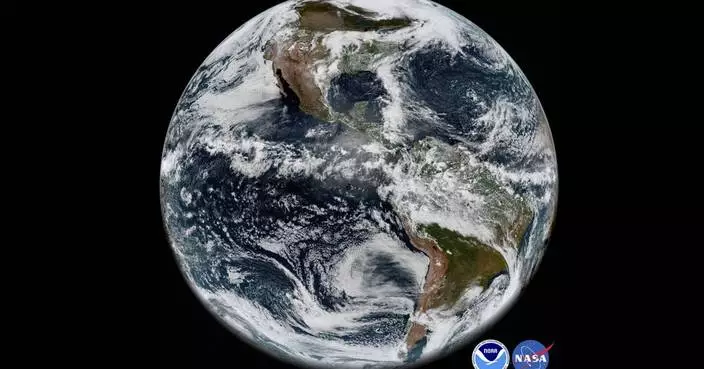The lake in the US Mid West has been frozen for most of the winter.
Lake Michigan has formed thousands of ice shards as spring begins to melt the frost caused by a polar vortex.
The lake in the US Mid West has been frozen for most of winter after sub-zero temperatures hit parts of the US including Michigan and Illinois.
During the peak of the polar vortex, temperatures fell to minus 30C in the Michigan area, which caused the formation of ice shelves on the lake as waves froze over the icy surface.
With the arrival of spring, the ice shelves are beginning to thaw, leading to sheets of ice breaking and forming shards on the surface of the lake.
Water is moving underneath the ice and pushing shards up to the surface, captured in photos from the pier of South Haven, Michigan.
The photos show broken ice piling up into thousands of individual layers.
The US Coast Guard has warned the patterns should only be viewed from safe spots like piers or dry land, as the ice is not safe to stand on.
The moving water underneath the ice means it is easy to fall through as the surface breaks up.
US Coast Guard spokesman Grant Heffner told MLive.com: “No ice is safe ice, especially this time of year. The ice is certainly deteriorating and breaking up.”
In late January, temperatures plunged as low as minus 30C in parts of the US, with a strong wind chill caused by the polar vortex.
Governors in Wisconsin, Illinois and Michigan declared emergencies as the worst of the cold threatened.
Before spring arrived, 56% of Lake Michigan – which borders Michigan, Wisconsin, Illinois and Indiana – was covered in ice.
You're driving along, and without warning, the roadway drops from beneath you.
There are a few seconds of falling, with thoughts possibly racing about family or loved ones, followed by a jarring impact, and most likely injury.
Tuesday's collapse of the Francis Scott Key Bridge in Baltimore following a ship strike brought back jarring memories of their own ordeals to people who survived previous bridge collapses.
Linda Paul, 72, survived a bridge collapse in Minneapolis on Aug. 1, 2007. The Interstate 35W bridge collapsed without warning into the Mississippi River in downtown Minneapolis during the evening rush hour.
Paul was 55 then, working as a shop-at-home designer for a local company and driving home in a minivan that doubled as a “store on wheels,” loaded with fabrics and sample books. Traffic was at a total standstill, leaving her stuck on the bridge around 6 p.m.
“I remember looking around and thinking that there was definitely something wrong,” Paul said. “I looked ahead and realized that the center section of the bridge was going down, and knew at that point that there was a good chance I would go down with it. And that is exactly what happened.”
Police later told her that she plunged down a 50-foot (15-meter) slope as the concrete deck of the bridge collapsed. She was still inside the minivan as it fell onto wreckage on the riverbank.
Chunks of concrete hit her, fracturing five of her vertebrae and crushing her left cheekbone, as the collapse killed 13 people and injured 145.
Jessie Shelton, now a 35-year-old Broadway actor and voiceover artist in New York, was 18 when she survived the Minnesota bridge collapse. She had been driving from work to a production she was part of at Children’s Theater in Minneapolis.
“I started to slide backwards. And it was kind of, like, jolty,” she said. "I felt like I was on some sort of amusement park ride. And I remember thinking at 18 years of age, ‘Well, we’ll see what happens.’”
Then she was knocked unconscious, suffering a concussion and injuries that broke her back in four spots.
“I just remember that sort of final moment before I got a concussion,” Shelton said. “I don’t recall what came after. I woke up at North Memorial Hospital with either my mom or my best friend standing over me.”
“I had a big cement block in the backseat of my car," she recalled. "It narrowly missed me. It came off of one of the signs, I think, up above. So it really was pretty miraculous that I made it because I couldn’t have navigated out of that situation, because I was out cold.”
Gustavo Morales Jr. was driving a truck over the Queen Isabella Causeway in Port Isabel, Texas and fell into an abyss after a tugboat struck a pillar, sending part of the bridge into the water on Sept. 15, 2001.
Morales was on his way home from a late night managing a restaurant on South Padre Island at the time. He remembers it feeling like a rumble or explosion — and then his pickup truck flew over the collapsed roadway for a few seconds before crashing into the water. Thoughts of his wife, who was expecting their third child, flooded his mind.
“Everything comes into your mind a thousand miles an hour," he said. “It was my wife, my girls, my son who was on his way.”
Morales believes wearing his seatbelt and being able to manually roll down the window helped him stay conscious and escape the truck. He spent about ten minutes in the water before some young men nearby who witnessed the tugboat hit the pier helped him and others safely out. Eight people died that day. Morales was among three survivors.
Garrett Ebling, another survivor of the 2007 Minnesota bridge collapse, was numb when he learned that six people who were on the bridge in Baltimore remained missing and were presumed dead.
“As Minneapolis bridge collapse survivors, one of the things we hold onto is that we went through this in the hopes that people wouldn’t have to go through something like this in the future,” Ebling said.
Ebling, 49, of New Ulm, Minnesota, endured multiple surgeries, including facial reconstruction, as well as emotional trauma.
“We don’t know what happened in Baltimore,” Ebling said. “But I don’t want to see somebody have to go through that, especially unnecessarily. If it ends up being a preventable accident then I really feel bad. In my estimation, what happened in Minneapolis was a preventable bridge collapse. And if that also happened in Baltimore, then I think that makes it even more disappointing.”
Ahmed reported from Minneapolis and Gonzalez in McAllen, Texas. Associated Press writers Ben Finley in Norfolk, Virginia, and Wayne Parry in Atlantic City, New Jersey, also contributed to this story.
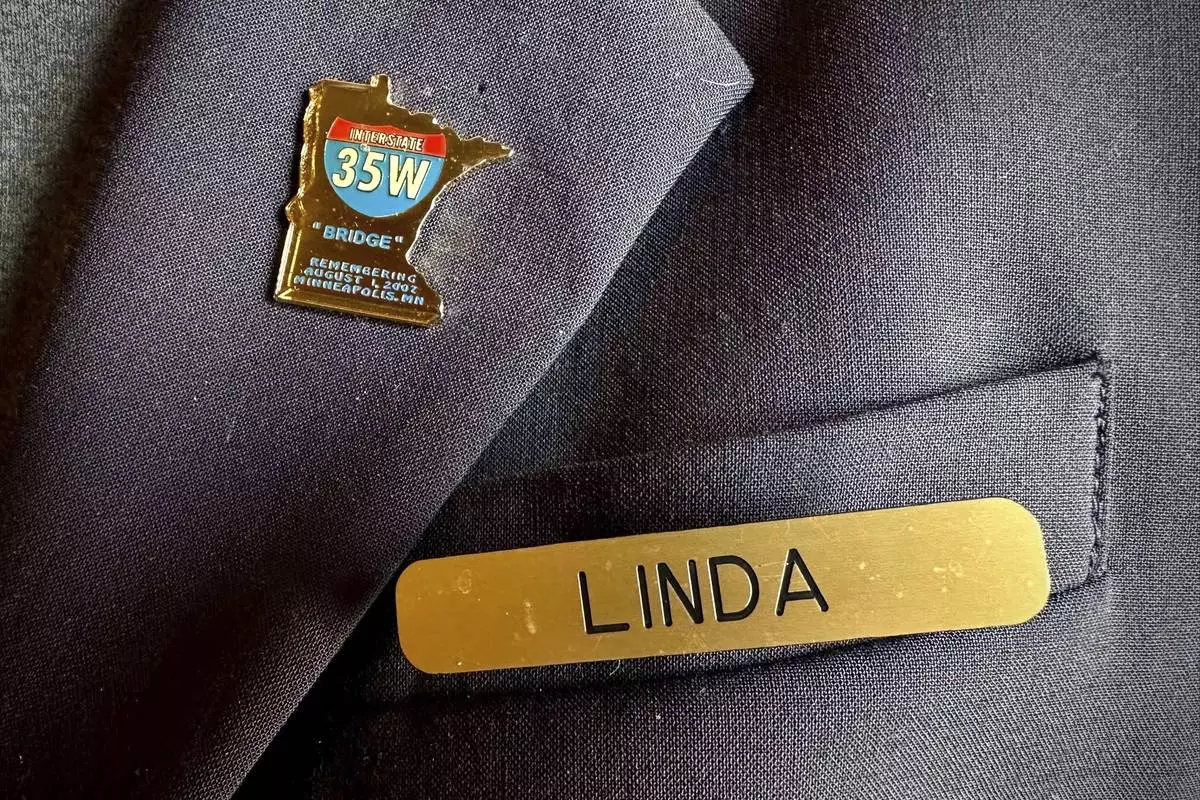
A gold pin in the shape of Minnesota – with the words "Interstate 35W 'Bridge' Remembering August 1, 2007" – is photographed on Linda Paul in St. Paul, Minn., on March 27, 2024. She survived the Interstate 35W bridge collapse in Minneapolis on Aug. 1, 2007, and was reminded of it after the Francis Scott Key Bridge in Baltimore collapsed on March 26, 2024. (AP Photo/Mark Vancleave)
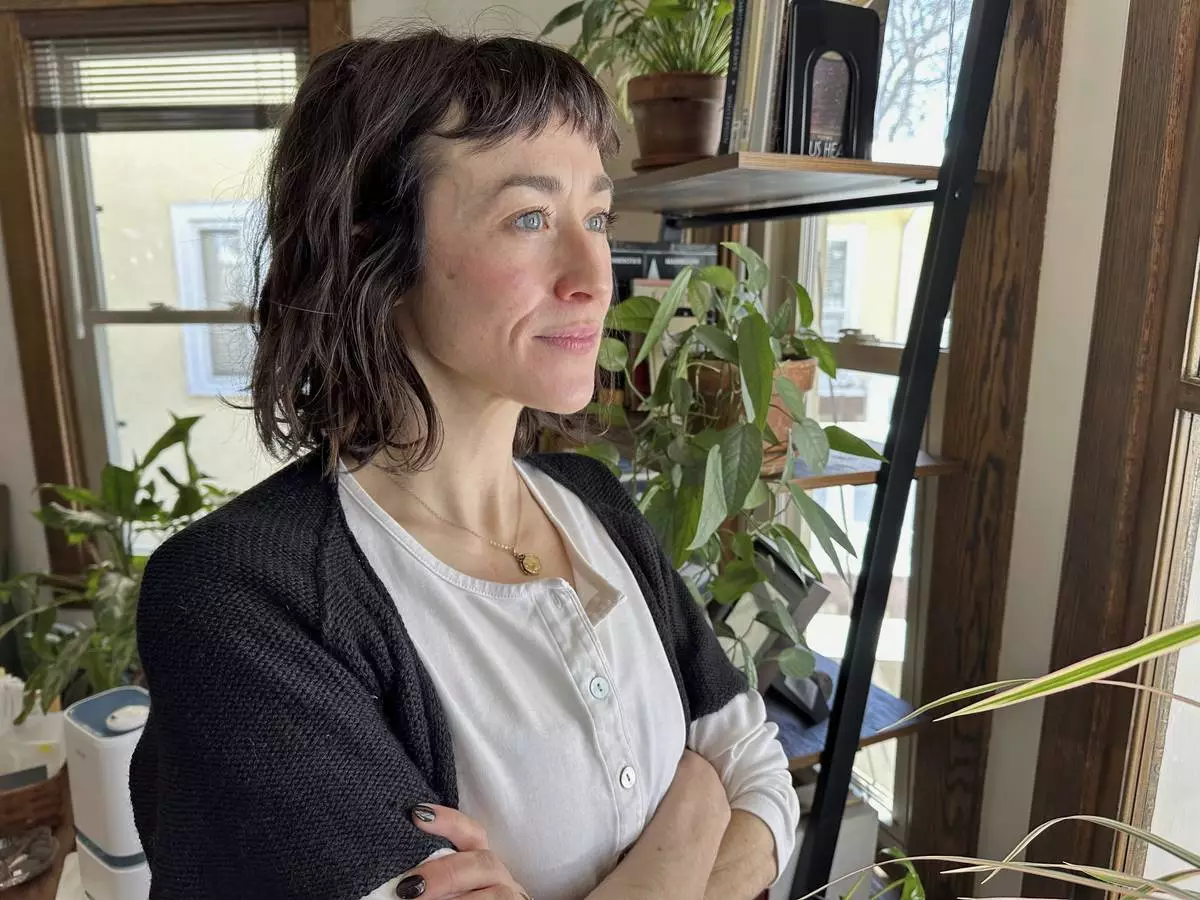
Jessie Shelton is photographed at her parent's home in Minneapolis on Wednesday, March 27, 2024. She survived the Interstate 35W bridge collapse in Minneapolis on Aug. 1, 2007, and was reminded of it after the Francis Scott Key Bridge in Baltimore collapsed on March 26, 2024. (AP Photo/Mark Vancleave)

Linda Paul is photographed inside the Minnesota State Capitol building on Wednesday, March 27, 2024, in St. Paul, Minn., where she works part-time as a tour guide. She survived the Interstate 35W bridge collapse in Minneapolis on Aug. 1, 2007, and was reminded of it after the Francis Scott Key Bridge in Baltimore collapsed on March 26, 2024. (AP Photo/Trisha Ahmed)
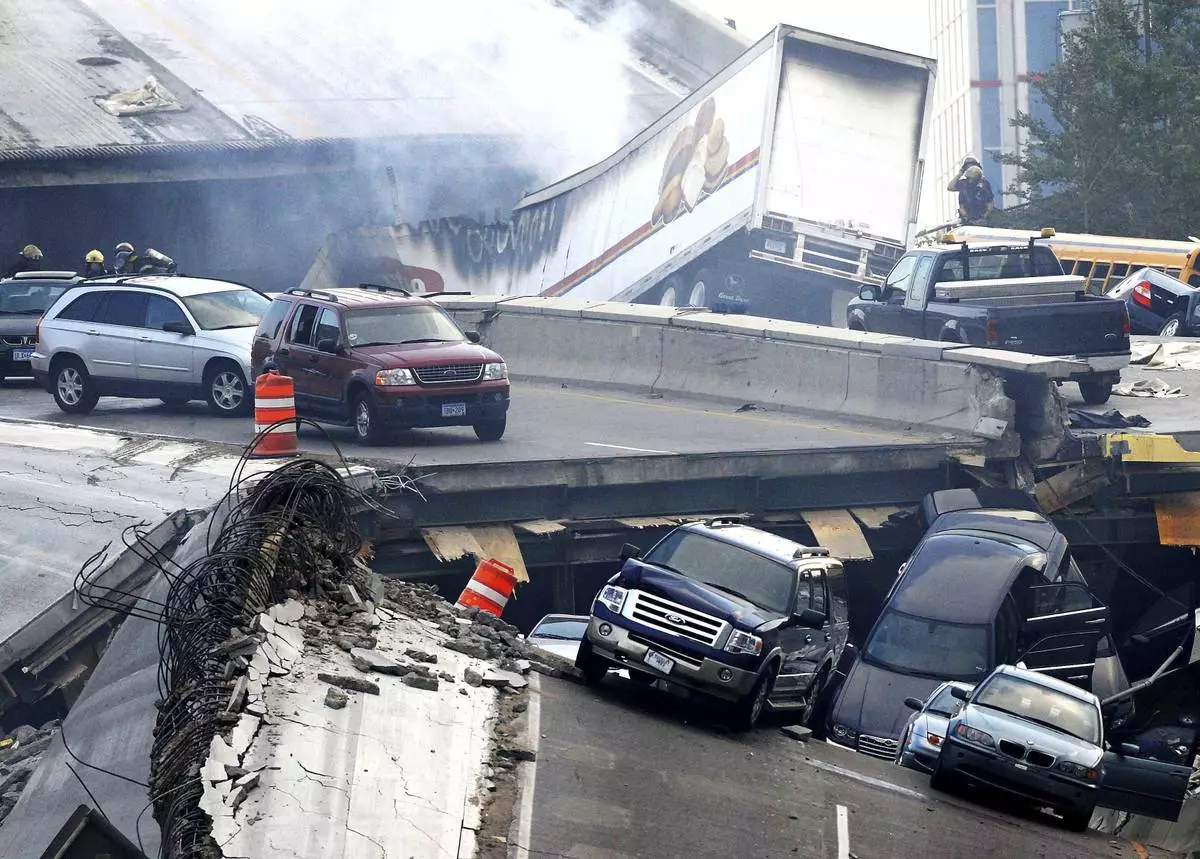
FILE - In this Wednesday, Aug. 1, 2007 picture, vehicles are scattered along the broken remains of the Interstate 35W bridge, which stretches between Minneapolis and St. Paul, after it collapsed into the Mississippi River during evening rush hour. The collapse of the Francis Scott Key Bridge in Baltimore following a ship strike on March 26, 2024 brought back jarring memories of their own ordeals to people who survived previous bridge collapses. (Stacy Bengs/The Minnesota Daily via AP)
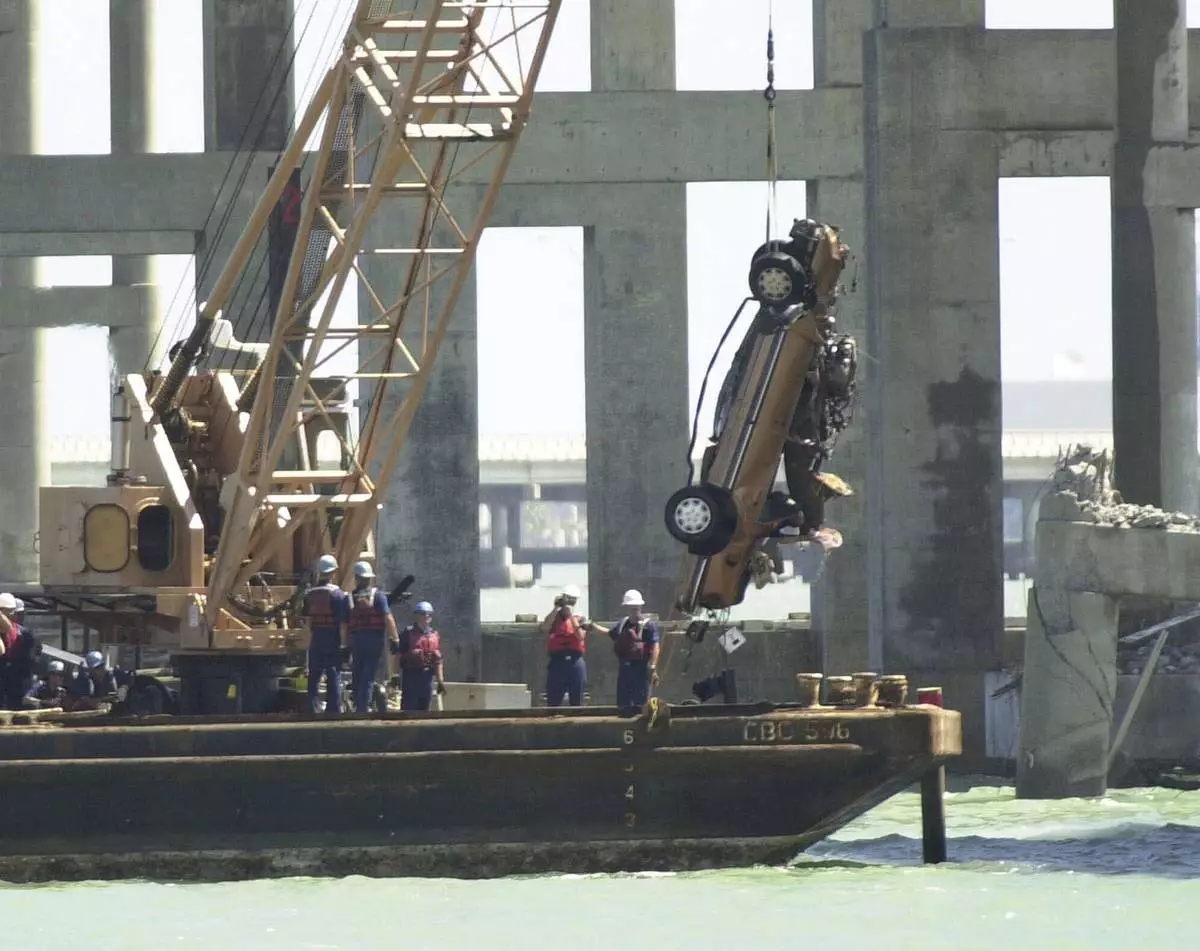
FILE - Recovery workers pull a car from the bay at the site where the Queen Isabella Causeway collapsed, in Port Isabel, Texas, Tuesday, Sept. 18, 2001. The collapse of the Francis Scott Key Bridge in Baltimore following a ship strike on March 26, 2024 brought back jarring memories of their own ordeals to people who survived previous bridge collapses. (AP Photo/Eric Gay, File)








